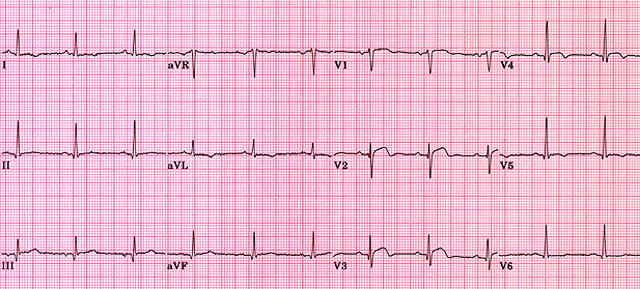The heart is an essential organ that plays a vital role in pumping oxygenated blood to various parts of the body. However, it can be susceptible to various conditions, including septal infarct. In this article, we will explore the causes, symptoms, diagnosis, treatment options, prevention, and living with septal infarct. We will also touch upon the complications, prognosis, and the latest research advancements in this field.
Introduction
The heart consists of different chambers, each responsible for specific functions. The septum, a thick muscular wall, divides the heart into left and right sides. Septal infarct, also known as myocardial infarction or heart attack, occurs when the blood supply to a part of the septum is blocked, resulting in damage to the heart muscle.
Understanding Septal Infarct
Septal infarct is primarily caused by a blockage in one of the coronary arteries, which supply blood to the heart muscle. This blockage is usually a result of atherosclerosis, a condition characterized by the buildup of fatty deposits or plaques within the arteries. These plaques can rupture, leading to the formation of blood clots that obstruct the blood flow.
Causes and Risk Factors
Several factors contribute to the development of septal infarct. The primary cause is the presence of atherosclerosis in the coronary arteries. Other risk factors include smoking, high blood pressure, high cholesterol levels, obesity, diabetes, a sedentary lifestyle, and a family history of heart disease. Age and gender also play a role, with men and older individuals being more prone to septal infarct.
Symptoms and Diagnosis
The symptoms of septal infarct can vary from person to person. Common signs include chest pain or discomfort, shortness of breath, fatigue, nausea, and sweating. However, some individuals may experience atypical symptoms or even no symptoms at all, which makes diagnosis challenging. Diagnostic tests such as electrocardiogram (ECG), echocardiogram, cardiac catheterization, and blood tests are utilized to evaluate the condition and determine the extent of damage.
Living with Septal Infarct
Living with septal infarct requires making certain adjustments to ensure a heart-healthy lifestyle. Regular follow-ups with healthcare providers, adherence to prescribed medications, and adopting a well-balanced diet low in saturated fats and sodium are essential. Cardiac rehabilitation programs can also help individuals recover and regain their strength after a heart attack.
Complications and Prognosis
Septal infarct can lead to various complications, including heart failure, arrhythmias, and further damage to the heart muscle. The prognosis depends on several factors, such as the extent of the infarction, the timeliness of medical intervention, and the individual’s overall health. With prompt medical care and appropriate lifestyle changes, many individuals can live fulfilling lives after septal infarct.
Research and Advancements
Medical research is continuously progressing, leading to advancements in the diagnosis and treatment of septal infarct. Researchers are exploring innovative therapies, such as stem cell therapy and gene therapy, to regenerate damaged heart tissue and improve heart function. Additionally, ongoing studies focus on identifying novel biomarkers and developing targeted medications for better management of this condition.
Conclusion
Septal infarct, or myocardial infarction of the septum, is a serious heart condition caused by the blockage of coronary arteries. Prompt diagnosis, timely medical intervention, and lifestyle modifications are crucial in managing the condition and preventing further complications. By adopting a heart-healthy lifestyle and staying informed about the latest research advancements, individuals can improve their quality of life and reduce the risk of septal infarct.
FAQs
- What is septal infarct? Septal infarct refers to the damage to the heart muscle that occurs when the blood supply to a part of the septum is blocked.
- What causes septal infarct? The primary cause of septal infarct is atherosclerosis, a condition characterized by the buildup of plaques in the coronary arteries.
- What are the risk factors for septal infarct? Risk factors include smoking, high blood pressure, high cholesterol, obesity, diabetes, sedentary lifestyle, and family history of heart disease.
- How is septal infarct diagnosed? Diagnostic tests such as ECG, echocardiogram, cardiac catheterization, and blood tests are used to diagnose septal infarct.
- What are the treatment options for septal infarct? Treatment options include medications, angioplasty, and coronary artery bypass grafting (CABG) to restore blood flow and manage symptoms.
- Can septal infarct be prevented? Yes, adopting a healthy lifestyle, managing risk factors, and seeking regular medical care can help prevent septal infarct.
- What lifestyle changes are recommended for living with septal infarct? Lifestyle changes include quitting smoking, maintaining a healthy weight, regular exercise, and following a heart-healthy diet.
- What are the possible complications of septal infarct? Complications can include heart failure, arrhythmias, and further damage to the heart muscle.
- What is the prognosis for individuals with septal infarct? The prognosis depends on various factors, including the extent of the infarction and the individual’s overall health.
- What are the latest research advancements in the field of septal infarct? Ongoing research focuses on innovative therapies, such as stem cell therapy and gene therapy, as well as the development of targeted medications for better management of septal infarct.CLICK HERE FOR MORE INFO HEALTH
